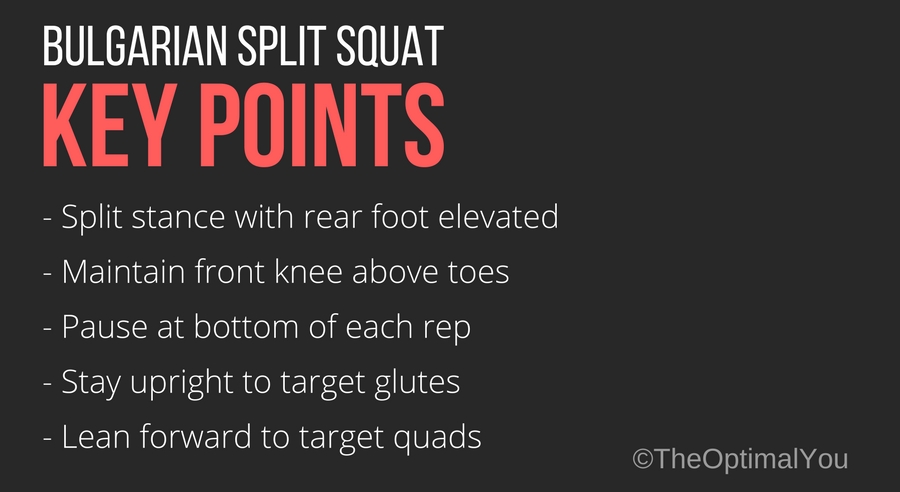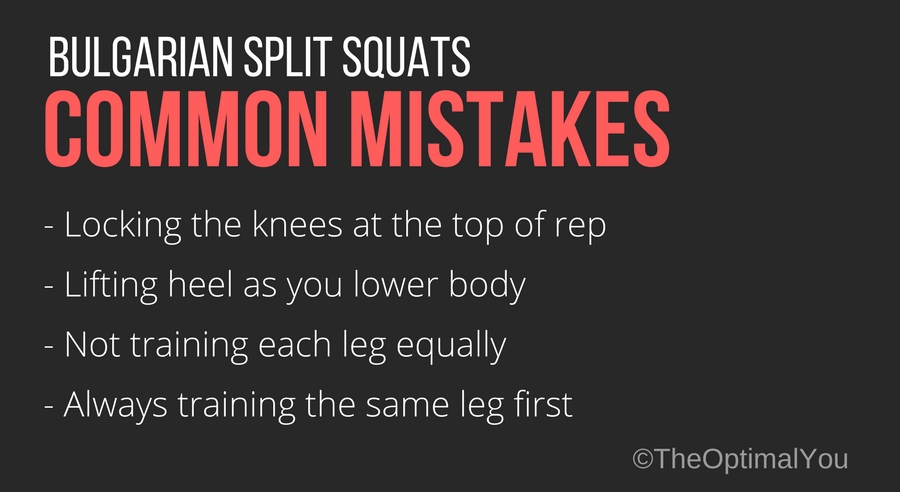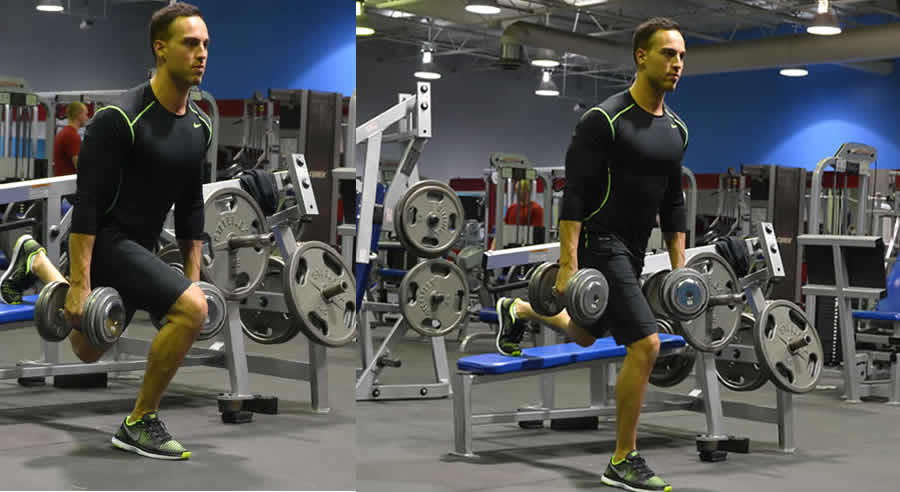Purpose of the Bulgarian Split Squat
The Bulgarian split squat is a great lower body exercise that can be used to target the glutes, the hams, and the quads. Emphasis can easily be shifted by modifying the position of the torso – leaning forward at the hip emphasizes the glutes and hamstrings more, while maintaining a more upright torso position dumps more stress onto the quads.
Equipment Needed for the Bulgarian Split Squat
Bulgarian split squats are one of the more versatile exercises there is in that they can be performed using bodyweight only, dumbbells, a barbell, or even with a cable apparatus (although it’s not as common).
Dumbbells are generally easier to use because the center of gravity is lower, thus making it easier to balance in comparison with a barbell, in which the center of gravity is higher up.
Difficulty of the Bulgarian Split Squat
From a scale of 1 to 5, Bulgarian split squats would be around a 3 – although this is highly individual, as some people may have a harder time balancing than others. The difficulty can be increased by keeping both feet closer to the midline of the body (as if trying to walk a tight rope), or decreased by widening the distance between the feet (increasing the base of support).
How to Perform Bulgarian Split Squats
To perform Bulgarian split squats, begin by taking a split stance with the rear foot being elevated on a step, anything more than that promotes an anterior pelvic tilt and places unnecessary stress onto the lumbar spine. If adding weight, hold dumbbells at your side, or rest a barbell on your back, and descend until your back knee barely comes into contact with the floor. Pause at the bottom to force the muscles to do more work, and then ascend up to the starting position.
If the goal is to load the quads, maintain an upright position throughout. If the goal is to load the glutes and hamstrings, lean in as you descend, and lean back as you ascend.

Key points for the Bulgarian Split Squat
- Take a split stance with the rear foot elevated (can place on bench)
- Descend until the rear knee brushes the floor
- Pause at the bottom before ascending up to the starting positon
- Stay upright to target the glutes, lean forward to target the quads
How Many Reps when Performing Bulgarian Split Squats
The Bulgarian Split Squat is not the type of exercise where you want to pile on the weight, as it increases the risk, without equally increasing the benefits. Because of the potential risk, lower loads that allow higher reps to be performed are ideal – generally aiming to perform 10-15 reps per leg.
Common Mistakes when Performing Bulgarian Split Squats

Some of the more common mistakes made when performing Bulgarian Split Squats are:
- Looking the knees at the top of each rep – this defeats the purpose of the exercise as it removes the tension from the muscles and places it on the knee.
- Lifting the heal as you lower your body – this places the knees in a vulnerable position. Maintain your knees above your toes throughout the rep.
- Not training each leg equally – most people find it easier to perform uni-lateral leg exercises with one leg than the other, and as a result they unintentionally train the better leg through a more thorough range of motion, while training the worse leg through a more limited range of motion. This only creates a larger discrepancy that is ultimately harder to overcome later.
- Always training the same leg first – it’s a common misconception that because one leg is favored, the other leg isn’t actually doing any work, but this isn’t the case. Just try lifting up the back leg if you actually believe it isn’t significantly contributing to the lift, and see how that goes for you. The fact is that both legs are contributing when performing Bulgarian Split Squats, and if you always train the same leg first, the other leg is always having to do its job while in a fatigued state, which ultimately can create imbalanced development.
Modifications to the Bulgarian Split Squat
As stated, the Bulgarian split squat is a very versatile movement that can be used to target various regions of the lower body. Therefore, depending on where you wish to target should determine how you modify the movement. While the most common way to perform the movement is with bodyweight, a barbell (resting on the back), or dumbbells (one in each hand), you can modify the placement of the resistance should you want to.
For instance, resting the barbell on the front as opposed to the back promotes a more upright position, which is ideal if the goal is to target the quads. Instead of holding two dumbbells, you could hold one at chest level as well, as if holding a goblet – the same way you would when performing goblet squats.
You could also hold on to a cable attachment in front of the body with the opposite hand of the lead leg. Placing the resistance in front of the body modifies the direction of effort in a way that increases the demand on the quad.
As you can imagine, there are nearly an endless amount of modifications for Bulgarian split squats, but the variations listed above are among the more common.
When to Perform Bulgarian Split Squats
Because it isn’t suggested to use heavy weights, it is ideal to perform Bulgarian split squats later in your workout, after you’ve done your compound movements.
Alternatives to the Bulgarian Split Squat
The obvious alternatives to Bulgarian Split Squats would be traditional split squats, in which both feet are on the floor, or front foot elevated split squats.
Bulgarian Split Squats vs. Split Squats, and Front Foot Elevated Split Squats
Bulgarian split squats, when done properly, increase the demand on the rear leg more so than traditional split squats, and especially front foot elevated split squats. Because of this, the Bulgarian is generally the most challenging way to perform split squats.

